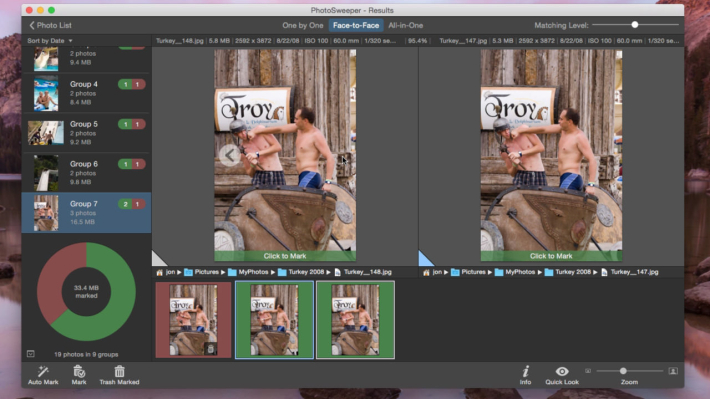


Grainy images are less of a problem for more sophisticated cameras with physically larger sensors and/or more modest resolutions, as there are less pixels crammed into a smaller space, so they’re less visible when the sensor is pushed to its performance limits. Best still, of course, employ the use of a tripod and put the camera on self-timer when shooting so you’re not having to physically press the shutter release button and thereby perhaps avoid introducing blur via the fact you’re ‘jogging’ the camera.
PHOTOSWEEPER TROUBLESHOOTING ISO
To avoid the ugly, grainy look, manually select a lower ISO setting (less than ISO1600, say) and compensate by placing the camera on a flat steady surface instead of attempting to use it hand held. The trade off for reducing blur is that image grain – also referred to as ‘image noise’ – can visibly intrude into our images, particularly on those cameras with physically smaller sensors already burdened with a high pixel count / resolution. This will be due to the fact that the camera has automatically selected a high sensitivity setting to compensate for lack of light or lack of available flash, in an attempt to limit and hopefully avoid image blur/camera shake. Simply experiment with white balance settings until you find the look – and colors – you’re after. Or alternatively there is often the chance to achieve a custom white balance – achieved simply by holding up a piece of white paper in front of the lens. You’ll probably also find a few specific night-time settings. You’ll also find settings on your camera for a variety of artificial and natural lighting conditions – including strip lighting, natural daylight (which can, conversely, lend photographs a cool blue color cast), cloudy days and so on. So, if you’re shooting indoors without flash and bumping up the ISO settings to compensate and avoid blur, you’ll be left with orange-y images.įine, if that’s the look you’re going for, but if it’s a more natural look you’re after, simply drill into your camera’s menu of white balance settings and select the icon that most closely resembles a common light bulb and try the shot again with this compensatory mode selected. Most of us will be aware that tungsten/artificial lighting lends a warm orange glow to shots. The most common solution to this very common photography problem comes down to finding the correct white balance setting (opens in new tab) for both camera and subject.


 0 kommentar(er)
0 kommentar(er)
